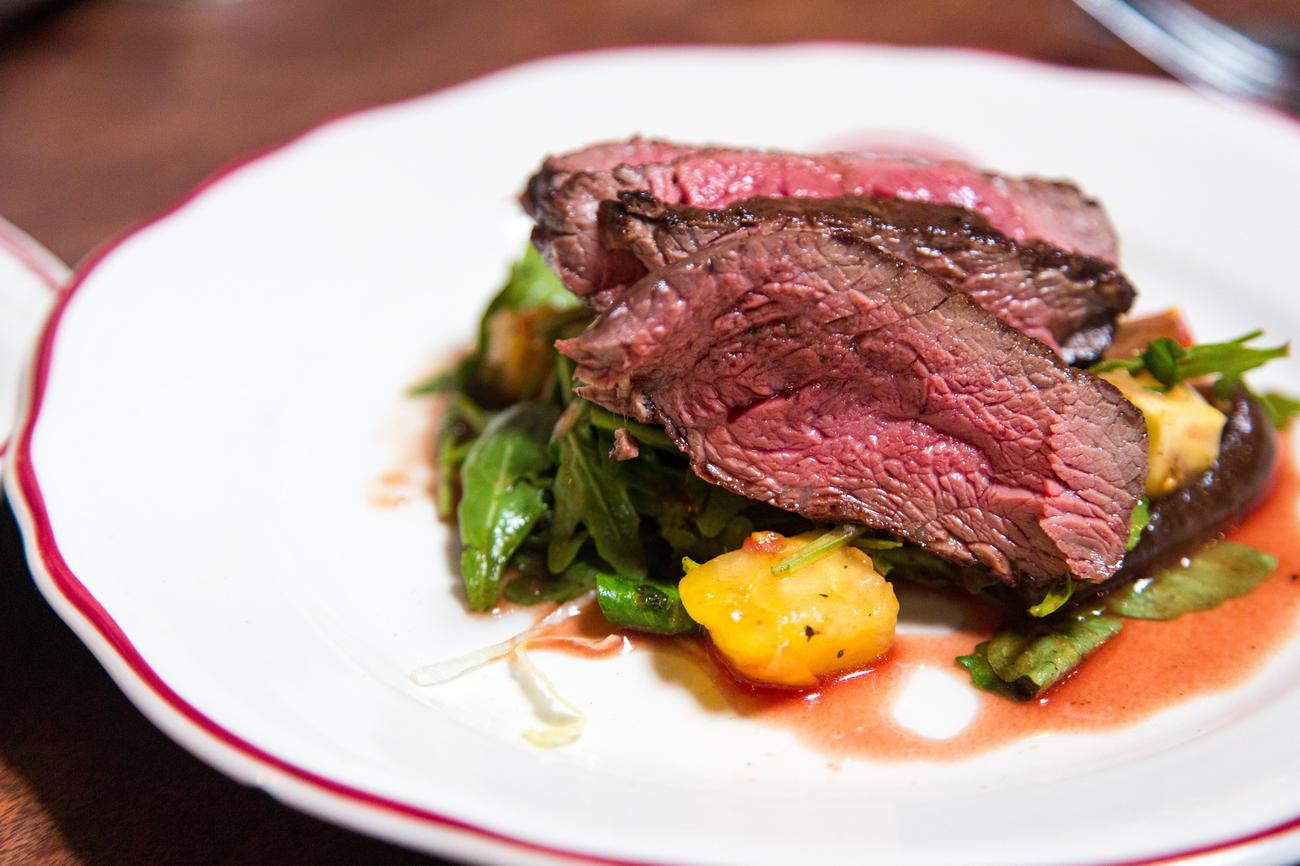Prepare to embark on a gastronomic journey like no other as we peel back the layers of mystery surrounding the delectable delicacy known as steak tartare. This article will be your passport to the hidden truths and fascinating facts that lie beneath the surface of this raw masterpiece. From its intriguing history to its tantalizing preparation methods, we will delve into the depths of steak tartare, uncovering its cultural significance and revealing the artistry behind its creation. Join me as we unveil the captivating world of steak tartare and satisfy your craving for culinary knowledge.

Steak Tartare Facts
Steak tartare, a French delicacy, is a dish that has captivated palates for years with its bold flavors and unique preparation. But how much do you truly know about this raw delight? Let’s delve into the fascinating facts surrounding steak tartare and uncover its untold truths.
A Historical Journey of Steak Tartare
The origins of steak tartare are shrouded in mystery and debated among culinary historians. While its exact inventor remains unknown, it is widely believed to have originated in France. Originally known as “American Steak” in France, this dish gained prominence after being featured in the legendary cookbook “Le Guide Culinaire” by Auguste Escoffier in 1903. Its name, “Tartare,” evolved from a French word, which originally referred to a tribe of ferocious nomads known for their fondness for raw meat. Over time, the name became associated with this delectable raw beef preparation.
“Steak tartare’s journey through history is as intriguing as its flavors. From its mysterious origins to its prominence in French cuisine, this dish bears witness to the evolution of culinary traditions.”
Preparing Steak Tartare: A Masterful Art
Steak tartare is not just a dish; it is an art form. Crafted using the finest quality raw beef, the meat is delicately chopped or minced, allowing it to retain its natural texture. The choice of beef varies, with some recipes opting for tenderloin, while others prefer sirloin or rib-eye cuts. The meat is then enhanced with an array of seasonings, which can include onions, capers, mushrooms, Worcestershire sauce, and mustard, among others. For a visually stunning presentation, a raw egg yolk is often served on top, lending a velvety richness to the dish.
“Preparing steak tartare is a culinary masterpiece, where every cut and seasoning is a brushstroke on the canvas of gastronomy. The combination of ingredients creates a symphony of flavors that dances on the palate.”
Cultural Significance and Global Adaptations
Steak tartare’s popularity has transcended its French origins, making its way into various cultures around the world. While some may harbor health concerns about consuming raw meat, others embrace the practice. Raw or rare meat is enjoyed in many cultures, with dishes like kibbeh nayyeh, çiğ köfte, and yukhoe bearing similarities to steak tartare. In different regions, adaptations of this dish have emerged, each with its own unique twist and flavor profile. From the Polynesian influence on French cuisine to the evolution of steak tartare as a dish consumed by warriors, its cultural significance is deeply intertwined with the history of the regions it has touched.
“Steak tartare’s journey across cultures is a testament to its allure. Just as different melodies resonate with diverse audiences, regional adaptations of steak tartare bring their own harmonious notes to the table.”
Steak Tartare: An Epicurean Delight
Whether savored as an appetizer or relished as a main course, steak tartare remains an epicurean delight that embodies the pinnacle of gastronomic indulgence. Its unique combination of flavors and textures, expertly paired with complementary ingredients, creates a multisensory experience that leaves a lasting impression. With each bite, the raw, velvety beef tantalizes the taste buds, while the harmonious blend of seasonings adds a symphony of savory notes. It is a dish that demands respect, appreciation, and a discerning palate to truly uncover its nuanced complexities.
“Steak tartare is an invitation to the world of epicurean indulgence, where every mouthful is a culinary voyage. It is a dish that awakens the senses and stimulates the appetite for unexplored gastronomic treasures.”
In conclusion, steak tartare is not just a dish; it is an embodiment of culinary heritage, cultural diversity, and unparalleled artistry. From its intriguing history to the meticulous craft of its preparation, this raw delight continues to captivate and inspire food enthusiasts worldwide. So, the next time you venture into the world of gastronomy, dare to explore the untold truths of steak tartare and unravel its fascinating journey from raw ingredients to culinary masterpiece.
“Steak tartare’s allure lies not only in its flavors but also in its tales. Unveiling the facts behind this raw delicacy reveals a world of culinary wonders waiting to be discovered.”
Steak tartare is a delicacy that is full of history, flavor, and tradition. If you’re curious about the origins and interesting facts surrounding this raw meat dish, then look no further! Click here to discover some fascinating tidbits about steak tartare.
FAQ
Q: What is steak tartare?
A: Steak tartare is a French dish made from raw, chopped or minced beef mixed with seasonings and ingredients.
Q: What was steak tartare originally known as in France?
A: Steak tartare was originally known as “American Steak” in France.
Q: How did steak tartare gain popularity?
A: Steak tartare gained popularity after it was featured in the cookbook “Le Guide Culinaire” in 1903.
Q: Where does the name “Tartare” come from?
A: The name “Tartare” comes from a French word with evolving meanings over time.
Q: Is steak tartare consumed in other cultures?
A: Yes, there are similar dishes consumed in other cultures, such as kibbeh nayyeh, çiğ köfte, and yukhoe.
- Georgia Platform: A Southern Strategy, 1850s - March 31, 2025
- How many weeks is 40 days: Quick Conversion Guide for Accurate Results - March 31, 2025
- How many feet is 300 meters? 984 Feet: Understand Length Conversions Easily - March 31, 2025
















